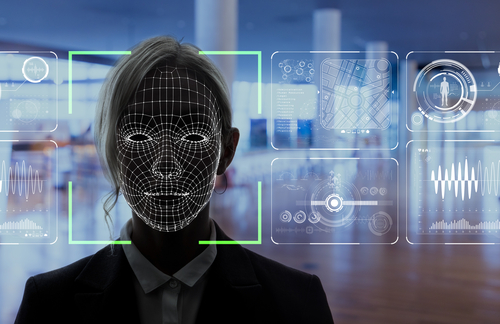How Digital Biometric Authentication Protects Businesses From Scammers?
 |
| How Digital Biometric Authentication Protects Businesses From Scammers? |
Image source shutter stock
The prime selling point of banks and institutions in the financial market is protecting the data of customers from getting compromised. With technological revolutions, customers demand convenience in every aspect, whether it is opening a bank account, registering in a crypto exchange, or online shopping, which is effectively delivered by biometric authentication.
It is used for confirming the identity of an individual or a beneficial owner of a firm by analyzing his/her forensics and facial characteristics. This method of verification is much layered and protective for customer onboarding as it includes information which unlike passwords or PINs can not be stolen. The Biometric Authentication consists of:
- Scanning of Fingerprints
- Facial Verification
- Voice Recognition
- IRIS Scanning
Recent research shows that almost 6.378 B people use smartphones and the latest technologies and by 2025 the number of users would come closer to 7.33 B.
With a rapid increase in users moving to online space, banks and corporations are getting cautious day by day and to comply with KYC and AML regulations, biometric authentication has become an unavoidable necessity. With time an increase of $65.3 B is estimated in the biometrics market by 2024.
Initially, there were many cases of data breaches at the beginning of digitization as the very same technological revolutions did equip cybercriminals and hackers as well. The consistent increase in online services being demanded leads to no physical encounter and makes the job of those scammers easier in many ways. But biometric authentication has lowered the fraud graph and enables businesses to manage and execute onboarding of risk-free clientele.
Services of Biometric Authentication
As listed above, there are a total of four services/phases of the verification process
Fingerprint Scanning
This is one of the most globally used technologies by the masses, everyone with a smartphone uses it for unlocking their phones. In mobile banking, customers prefer to use fingerprint scanners instead of entering their long-tail complex passwords.
Usually, a person holds ownership of multiple social and business accounts and it’s not possible to create a strong and unguessable password for each one and memorize it. Using one password for numerous accounts isn’t wise either. Therefore fingerprint scanning is considered an effective option and found everywhere.
The individuals also do become less worried about their data privacy and funds protection due to biometric authentication.
Voice Recognition
After getting a client on board, along with his/her profile, banks and organizations prefer to acquire a voice sample of the beneficiary and store it in their back office. Before any transaction or login attempt, the person is required to provide his/her voice sample to the system to perform tasks. This biometric technology is more reliable than fingerprint scanning. But there are few technologies like Deep Fakes which can be used to deceive biometric authentication, able to mimic someone’s voice, and grant unauthorized access.
Face Verification
It is widely used in airport clearances, banks, and other populated public places. Online facial recognition software learns and detects subtle facial traits of users which are hard to replicate for scammers. This method of biometric identification saves time for customers as instead of going anywhere they can purchase something or open an account by presenting their ID proofs in front of their device’s camera and the provided data gets compared against the data on ID documents in real-time.
IRIS Scan
It is one of the most trusted methods of biometric authentication where the solution determines the user’s identity by use of a mathematical model of identifying a pattern in the images of the irises of the person. The pattern is next to impossible to replicate for fraudsters. If used for cross-checking an image with tons of profiles/persons, there is no possibility of any faulty match. However, if the obtained image is at a distance greater than one or two meters, then results might get affected.
Technologies for Accurate Biometric Verification
There are a number of technologies like Deep Fake that might tamper with the original results of the biometric authentication. In order to avoid this and preserve accuracy, banks and organizations can opt for:
Liveness Detection
It is used for differentiating between a real user and a spoof. Due to advancements in prosthetics and makeup, facial masks can be created to deceive verification systems and grant access to someone else's account. Different platforms ask users to make certain movements and verify him/her from every angle.
3D Depth Sensing
Based on (Time Of Flight Technology), depth-sensing cameras can create an almost real image, whose details like shape, height, and volume are easily available with great resolution, enabling the verifiers to authenticate the user’s identity to the next level. The use of 3D sensors in cell phones is expected to grow to greater than 500 million units annually for secondary cameras until 2024 making biometric identification online more common.
Conclusion
The advent of the internet and ICT has revolutionized the data verification and onboarding process but also invented sophisticated methods of data breaches. For data and funds protection, biometric authentication prevents every possible chance of any scam or ID fraud. The forensic and facial information isn’t as easy to hack as passwords. This technology is globally used and offers different methods of verification, hard to deceive. For risk-free onboarding and preserving profitable customers, businesses are obliged to have efficient and advanced biometric authentication solutions.












No comments
Note: Only a member of this blog may post a comment.